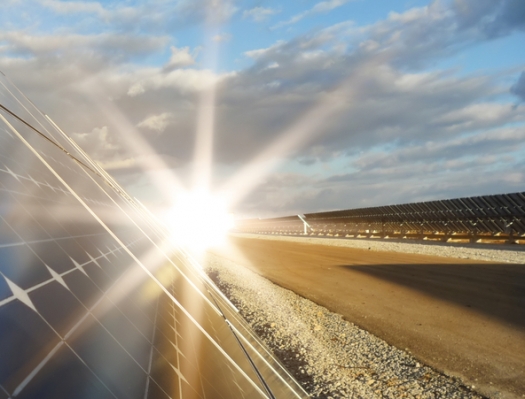US researchers develop new concentrating photovoltaic technology

GaAs solar cells with plastic lenses and microtracking promise efficient solar focusing for an eight hour day
Researchers from Penn State and the University of Illinois have combined miniaturised, GaAs photovoltaic cells, 3D-printed plastic lens arrays and a novel microtracking mechanism to make ultra-high efficiency solar cells suitable for use on the south-facing side of a building's roof.
They tested their prototype concentrator panel outside over the course of a day in State College, Penn. Even though the printed plastic lenses were not up to specification, they were able to demonstrate over 100 times solar concentration. They report their results in the most recent issue of Nature Communications.
"Concentrating photovoltaic (CPV) systems leverage the cost of high efficiency multi-junction solar cells by using inexpensive optics to concentrate sunlight onto them," said Noel C. Giebink, assistant professor of electrical engineering, Penn State.
"Current CPV systems are the size of billboards and have to be pointed very accurately to track the sun throughout the day. But, you can't put a system like this on your roof, which is where the majority of solar panels throughout the world are installed."
Improving cell efficiency from about 20 percent for silicon toward greater than 40 percent with multi-junction CPV is important because increasing the power generated by a given system reduces the overall cost of the electricity that it generates.
"We partnered with colleagues at the University of Illinois because they are experts at making small, very efficient multi-junction solar cells," said Giebink. "These cells are less than 1 square millimeter, made in large, parallel batches and then an array of them is transferred onto a thin sheet of glass or plastic."
To focus sunlight on the array of cells, the researchers embedded them between a pair of 3D-printed plastic lenslet arrays. Each lenslet in the top array acts like a small magnifying glass and is matched to a lenslet in the bottom array that functions like a concave mirror. With each tiny solar cell located in the focus of this duo, sunlight is intensified more than 200 times. Because the focal point moves with the sun over the course of a day, the middle solar cell sheet tracks by sliding laterally in between the lenslet array.
Previous attempts at such translation-based tracking have only worked for about two hours a day because the focal point moves out of the plane of the solar cells, leading to loss of light and a drop in efficiency. By sandwiching the cells between the lenslet arrays, the researchers solved this problem and enabled efficient solar focusing for a full eight hour day with only about 1cm of total movement needed for tracking.
To lubricate the sliding cell array and also improve transmission through the lenslet sandwich they used an optical oil, which allows small motors using a minimal amount of force for the mechanical tracking.
"The vision is that such a microtracking CPV panel could be placed on a roof in the same space as a traditional solar panel and generate a lot more power," said Giebink. "The simplicity of this solution is really what gives it practical value."
Because the total panel thickness is only about a centimeter and 99 percent of it - everything except the solar cells and their wiring - consists of acrylic plastic or Plexiglas, this system has the potential to be inexpensive to produce. Giebink cautions, however, that CPV systems are not suitable for all locations.
"CPV only makes sense in areas with lots of direct sunlight, like the American Southwest," he said. "In cloudy regions like the Pacific Northwest, CPV systems can't concentrate the diffuse light and they lose their efficiency advantage."
The researchers tested their prototype concentrator panel outside over the course of a day in State College, Penn. Even though the printed plastic lenses were not up to specification, they were able to demonstrate over 100 times solar concentration.
'Wide-angle planar microtracking for quasi-static microcell concentrating photovoltaics' by Jared S. Price et al, appears in Nature Communications, 2015; 6: 6223 DOI: 10.1038/ncomms7223

































